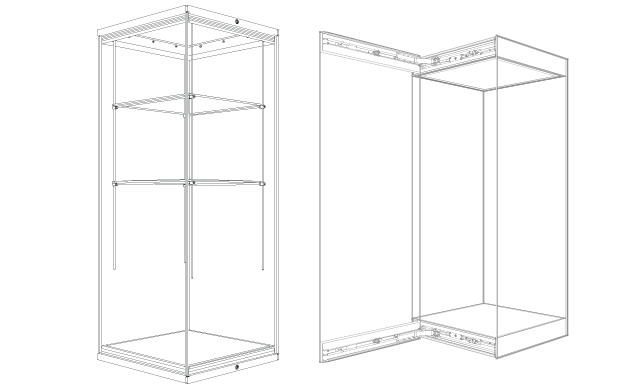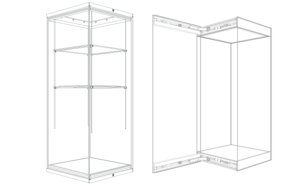
Display Cases: Getting into the Subject
Lewis Brooks, Exhibition Technician at the Imperial War Museum gave an introduction to working with display cases. There are a large range of different display cases, but for the purposes of this overview Lewis broke them down into two different types, looking at the advantages and potential limitations of both.
 |
| Evolution showcase by Tess Demountable http://www.tessdemountable.co.uk/showcases/evolution/ |
Purpose built showcases
Fully enclosed units.
Often used for permanent displays.
Can be very expensive so not always a good option for temporary exhibitions.
‘Set work’ display cases
Set work cases are bespoke and can be built into other structures.
They can be fabricated by in house technicians, or by external companies such as Qwerk or Glashause.
They are often cheaper than purpose built cases, but can be problematic if the design or construction is not thought through.
Opening cases
Talk to your technicians! They will have the knowledge and understand any quirks of specific cases. Many purpose built cases will use Abloy keys, which are difficult to copy or replace if lost. They have a code that must be sent to the manufacturer to order replacement keys, which can be costly.
Locking systems can vary and might be concealed from view, so if you can’t see where the case opens look out for keyholes and hinges to give you a clue. Locks might be barrel locks, t bar, pop up locks or cylinder locks. Sometimes the lock pops out a little bit when you unlock the case, and sometimes the entire locking mechanism will come out completely.
Sometimes case doors and lids are hinged so that they simply open outwards or tilt back. In other case types the door may slide across: often these cases have clever mechanisms to stop you sliding the door too far, but not always! Use caution and don’t push the door too far open.
Problems with access
If you are struggling to open a case, start by checking the following:
· Is the key far enough into the lock?
· Sometimes the cylinder of the lock can become misaligned. Try turning the key slightly as you push it in.
· Sometimes case doors can drop over time and put pressure on the lock. Use glass suckers (and an extra pair of hands) to help lift the door while you unlock it.
More about set works
It can be more tricky to get into set works cases, since the fixings will often be hidden in exhibition design or architecture. For example, the case might be a box with a glass or acrylic panel held in with security screws. It is a good idea to cover the screw heads whilst on display.
Acrylic hoods on table tops or vitrines can be heavy and require a lot of hands to open up safely. There will be lots of small and fragile objects underneath and the hood will need to be lifted off and over the table.
Access points could also be through parts of the building you wouldn’t normally need to know about, such as crawl spaces. Bring a head torch and ask for help!
Case opening procedures
Before opening a case, ask:
· Does it contain hazardous materials?
· Is the case conditioned? Is the whole gallery conditioned?
· If you are unsure, take advice from a conservator
Check your organisation’s policies on accessing objects inside display cases.
Case seals
Seals are essential for maintaining the environment in a case. Purpose built museum cases will have good, airtight seals but they can deteriorate through time, come loose or be tampered with by visitors. Check case seals are not misaligned and that there are no visible bumps. Take care opening and closing cases to prolong the life of the seals.
Case materials
Set works can be constructed from a range of different materials. Note that many institutions have stopped using MDF as it is porous and must be sealed. Forex is a better material for cases.
 |
| Samples of common case materials |
Common pitfalls
Cases are sometimes so effective at their job that they can cause other problems. For example, some are so airtight that the suction created in opening and closing the case can cause lightweight objects to move.
Static is a common problem, which can be minimised by using an anti-static spray.
When planning displays remember to think about the opening/closing mechanism of your case. Check the angle of opening to make sure your objects will fit and avoid any last minute panic when you have couriers and lenders present.
Think about the type of objects and handling requirements when planning case layouts. If the handling instructions for an object state that it needs 3 people to install it, check that you can fit that many people around the case door. Likewise, consider the architecture and wider design of the space.
Written by Rachel Graves, Collection & Exhibitions Manager, The Hepworth Wakefield

 Instagram
Instagram  LinkedIn
LinkedIn  Twitter
Twitter  My Account
My Account